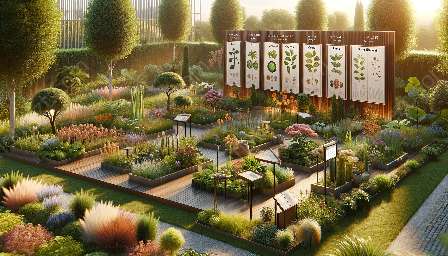Welcome to our in-depth exploration of plant propagation, a vital aspect of botanical gardens, gardening, and landscaping. In this guide, we will delve into various propagation methods, tips, and techniques, enhancing your understanding and passion for plant propagation.
Understanding Plant Propagation
Plant propagation is the process of creating new plants from existing ones. It's an essential practice for preserving plant species and achieving sustainable gardening and landscaping. At its core, plant propagation involves the reproduction of plants, either by sexual or asexual means, to maintain and proliferate diverse and healthy plant populations.
Methods of Propagation
Sexual Propagation
Sexual propagation involves the use of seeds or spores to grow new plants. This method is commonly used for a wide range of plant species in botanical gardens. It allows for genetic variation, leading to diverse and unique offspring.
Asexual Propagation
Asexual propagation, also known as vegetative propagation, enables the creation of new plants without the use of seeds. This includes methods such as cuttings, grafting, layering, and division. Asexual propagation is favored for preserving the traits of specific plants, such as those featured in botanical gardens, ensuring the continuity of their unique characteristics.
Propagating in Botanical Gardens
Botanical gardens play a significant role in plant conservation and education. Propagation is an integral part of maintaining and expanding the diverse plant collections found in these gardens. To support the botanical gardens' mission, propagating rare and endangered plant species is a top priority, ensuring their survival and availability for future generations.
Propagation for Gardening & Landscaping
For gardening and landscaping enthusiasts, plant propagation offers an exciting way to propagate favorite plants or produce an abundance of new, healthy plants for beautifying outdoor spaces. Whether it's starting a new garden bed, creating a vibrant flower display, or cultivating a productive vegetable garden, understanding propagation methods can elevate the gardening and landscaping experience.
Key Propagation Techniques
Cuttings
Cuttings involve taking a piece of a parent plant and encouraging it to grow roots and develop into a new plant. This method is commonly used for a wide range of plants, including decorative foliage, flowering plants, and herbs, making it a valuable technique for both botanical gardens and gardening enthusiasts.
Grafting
Grafting allows the combination of the desirable qualities of one plant with the advantageous root system of another, resulting in a stronger, more adaptable plant. This technique is particularly useful for creating unique and robust plants, ideal for botanical gardens and landscape design projects.
Embracing Sustainable Propagation
As the world becomes increasingly focused on sustainability, plant propagation plays a critical role in conserving plant species, supporting biodiversity, and reducing the environmental impact of horticultural practices. Through sustainable propagation methods, botanical gardens and gardening and landscaping communities can contribute to a healthier and greener planet.
Conclusion
Plant propagation is a fascinating and essential practice for botanical gardens, gardening, and landscaping. By understanding and mastering propagation methods and techniques, enthusiasts contribute to plant conservation, diversity, and sustainable horticulture. Embrace the art and science of plant propagation to nurture flourishing gardens and landscapes that inspire and delight.

















